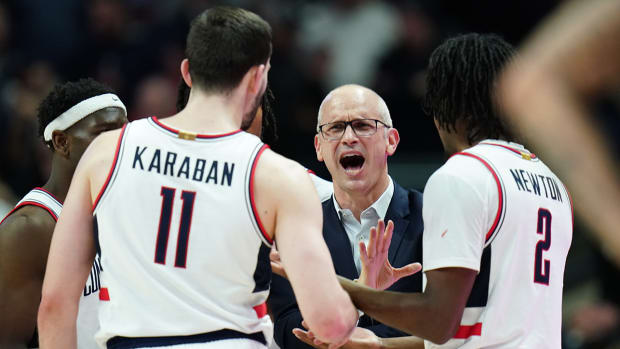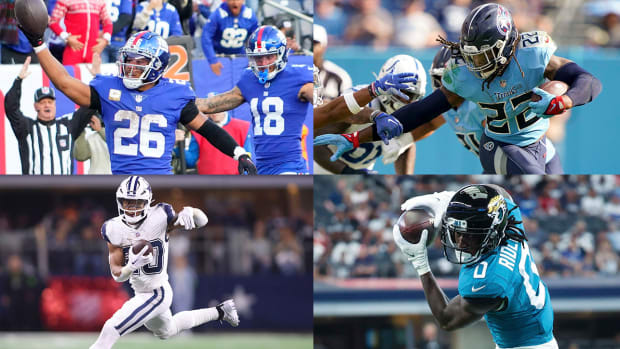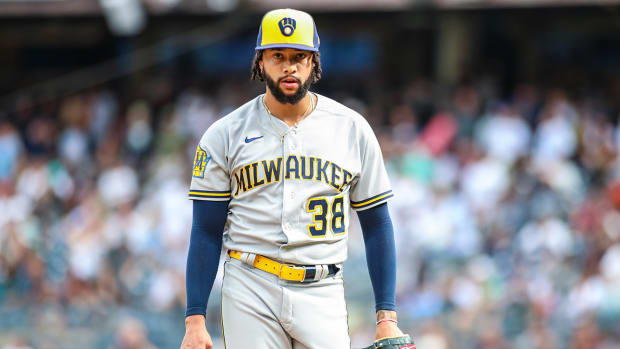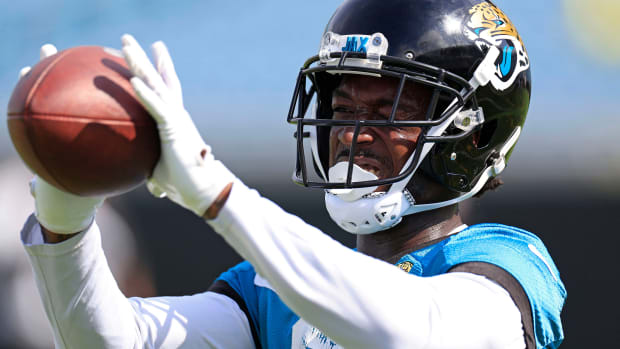2021 Fantasy Baseball: The BALC Draft Strategy
The next draft strategy is the one that I play in most seasons when trying to win an overall championship. I'll call it BALC. It focuses on drafting a balanced team, and you don't want to get beat at the catcher position. Over the past few years, I've tried to be balanced at the end of round three. The changing flow in the player inventory may be round four or round five before I roster my first three hitters depending on my draft position.
Ideally, I do like to have strength at least one middle infield position, but each year these options may be limited, and you can't force a player just to stick to a plan. Here are the key pieces to start building your team:
Elite Bat: I'm looking for a premium bat that will hit 3rd or 4th in the batting order. This player needs to offer plus power and batting average. Most of the time, this player comes from first base or outfield, but a player like Alex Bregman would qualify because he gives you a similar edge at third base while filling the high average and power bucket.
Balance Player: The second piece to the puzzle is a solid 20/20 player with a plus batting average. Sometimes this player is your first player drafted, and he may offer more power and speed. Most of these options will come from the outfield, but a fantasy owner can gain a superior edge if this piece to the puzzle comes from a middle infield position. Fernando Tatis Jr., Ronald Acuna, and Mookie Betts have the firepower to post a 30/30 season. Tatis and Acuna may very well make a push toward a 40/40 year.
Edge Base Stealer with Some Power: This is the most challenging piece to the puzzle to find, and a fantasy owner must be careful and not force this skill set. In the past, Carl Crawford and Jose Reyes were perfect players for this plan. In 2021, Trea Turner is the ideal start for a team for me in 5-by-5 Roto formats. You're looking for a player that can steal plus bases and hit double-digit home runs. The key is getting enough power with plus stolen bases. This player ideally would be an asset in batting average.
My First Three Batter Targets
The goal is to get as much power and speed with your first three or four batters. My target number is 75 home runs and 75 steals. By doing this, I set myself up for more outs at more positions later in the draft. With this style, I need to be flexible and understand the player pool. I can't force a player just because I'm looking for a specific skill set. If I need to take a different but higher skill earlier in the draft, I'll need to adjust my plan.
When a fantasy owner sits at the draft table, he must know what rounds to find the best players to fit this plan.
With this strategy, there's a good chance a drafter rosters an elite middle infielder, which will force him to a weaker first baseman or third baseman. Over the first five rounds, a roster will probably have a 1B, MI, and OF while building the foundation of their pitching staff, which forces you further down the food chain at 3B (or 1B depending on your start).
Gaining a Catcher edge
The catcher position is essential to this plan. With steals critical to this strategy, power may not be elite after the first three or four hitters are selected. Therefore, a fantasy owner can't cheat catchers unless he sees a reliable option or two late. The goal should be to invest in two catchers that combine for over 40 home runs, which tends to be problematic in 2021 due to a weaker catching pool after the first tier of options come off the board. A drafter doesn't have to win the catcher position, but he can't afford to get negative stats from the position. I will look to secure a catcher in the first 10 rounds in 15-team leagues in most seasons.
Fade Early One Dimensional Base Stealers
In this theory, I will avoid a one-dimensional base stealer early. Most of the time, I feel like I can't take a zero from power from any position. If I see a plus base stealer at the right price, I will keep an open mind, plus I can't overlook the changing values of players based on the ups and downs in power from season to season. In a year when power is down, there is more room for error by playing an empty power hitter with plus speed. In 2019, the targets were so high in home runs that the wrong roster construction could lead to a big hole in home runs.
Also, keep in mind, a late speed-only player with everyday at-bats does make sense as a base stealer in waiting. The key is to play the base stealer when he's running. This type of player has value if drafted after building the core of your offense and your pitching staff's foundation.
Foundation Aces
It is easy for a fantasy owner to want to push pitching back early in the draft when he feels his team has weakness in home runs. The fourth offensive player is attractive in the first four rounds, but building a starting pitching base is very important. The frontend starting pitching inventory has been more impactful in recent years compared to the steroid era. In this draft plan, a fantasy owner must remember to compete in all 10 categories, which requires a pitching foundation early in the draft.
The rounds in which a fantasy owner drafts their core starting pitchers will vary depending on league size and your competition's talent. In home leagues with trading, fantasy owners will draft the top few arms early, but they will push back the second-tier starters while almost relying on the previous season's draft flow to make the current draft decisions.
In the high-stakes market, pitching has become more critical in team building, especially with many owners looking to build on the dual ace theory. In essence, the quality of bats from rounds four to six is very attractive, making these trade-offs from hitters to pitchers early in drafts much easier.
Roster Structure After 10 Rounds
In the past, I've forced a weaker middle infielder inside of round 10. Going into most seasons, I will have these positions filled over the first 10 rounds: C, 1B, 3B, MI, OF, OF, SP, SP, SP, and CL.
In my first couple of years in the high-stakes market, I would come out of the first 10 rounds with only two starting pitchers due to the pitching pool had more volatility. The overall starting pitching inventory is much more reliable, forcing a fantasy owner to adjust their game plan.
The lack of depth at the front of the closing pool makes a case to draft two starting pitchers and two closers after 10 rounds. By doing this, a fantasy owner hopes to avoid wasting roster spots on closers in waiting and hopefully save free agent dollars over the long baseball season.
I've cheated saves trying to add that extra bat or third reliable starting pitcher in the past. The chase for saves on the waiver wire can be a tiresome battle in the high-stakes market with no trading, so I will look to improve my decision-making in this area going forward.
The main goal of this plan is to be balanced. For this strategy to work best, a fantasy owner needs to acquire the proper pieces early in a draft. Sometimes a drafter will need to be creative in their plan when he isn't in the right seat at the draft table to start with the desired players.
After the first 10 draft picks, a fantasy should have the ability to adjust their plan to the current player flow.
This draft strategy has the most success when a fantasy owner builds a foundation for all 10 categories. The stronger the base pieces are to the puzzle, the higher level of success.
When I have failed with this plan, I've waited too long to roster the thumper bat in my lineup. I've focused too much on the speed early. It's a fine line building a balanced team, and it is a lot harder than it looks.
FANTASY BASEBALL FROM SI FANTASY
- Introduction to SIscores
- What is Average Hit Rate (AVH)?
- What is Contact Batting Average (CTBA)?
- The 2021 Breakout Hitter Will Be...
- The 2021 Breakout Pitcher Will Be...
- The 2021 Bust of the Year Will Be...
- 2021 Fantasy Baseball Hub
- PLAYER PROJECTIONS & SI SCORES CHEAT SHEETS
- AL-ONLY AND NL-ONLY AUCTION VALUE CHEAT SHEETS





































